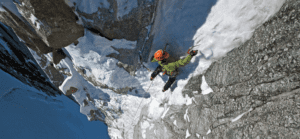Ueli Steck was the third son of a coppersmith and grew up in Switzerland’s Emmental Valley (famous for its eponymous cheese). He played hockey – one of his brothers became a professional hockey player – and accompanied his father on ski tours as a child. As a young man, Steck had little idea that climbing would become his livelihood. Instead, he trained as a carpenter.
On the Schrattenfluh, a limestone peak located in the upper Emmental, family friend Fritz Morgenthaler introduced him to climbing. The sport quickly took over his life. By the age of 17, he achieved a difficulty rating of 9 (UIAA) in climbing (the highest). The following year, he climbed the North Face of the Eiger and the Bonatti Pillar in the Mont Blanc massif, launching his career as a climber.
In adulthood, he relocated to Ringgenberg, a town near Interlaken, Switzerland. In 2008, he married Nicole Steck, whom he had met at an ice climbing competition. She would remain his partner until his death. Friends described Ueli Steck as warm, personable, and modest.
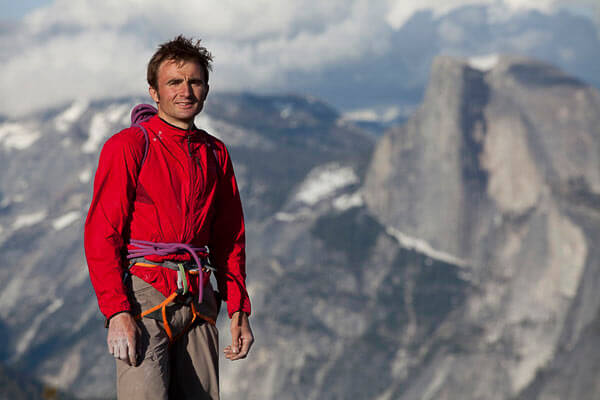
During his training for a new route in the Himalayas, Steck set a new record on the Eiger’s north face, finishing the climb in under four hours. The next year, he surpassed his previous time by completing the climb in under three hours.
Steck frequently defended himself against those who opposed his idea of turning the Eiger into a racetrack. He believed that speed in the mountains was not a new concept. However, the time it took to achieve those speeds had significantly improved. He had a profound understanding of alpinism and recognized that speed could enhance safety. Although some may have thought he was too preoccupied with media attention, he was also innovative in his approach to advancing his craft. Steck argued that developing speed on familiar terrain could equip climbers with the necessary skills to tackle future challenges.
Indeed, Ueli Steck’s relationship with fame was complicated, as evidenced by his mixed feelings toward the publicity that came with his achievements. Nevertheless, he thrived in the spotlight. Steck became a sought-after public speaker and was among the first alpinists to recognize the possibilities of social media.
Ueli was a precursor to the increasingly daring and documented climbs of the coming decades. Free Solo, released shortly after his death, captivated the public’s attention. Is it possible to maintain the purity and beauty of the sport when it becomes a gladiator-esque spectacle? For better or worse, Steck changed the course of climbing. His focus on herculean challenges against the backdrop of the clock helped merge alpine climbing with mainstream sports in the public’s consciousness.
Although he had lost the Eiger record to fellow Swiss climber Dani Arnold, Steck hesitated when asked if he wanted to reclaim the title. Apparently, the prospect of media attention, personal achievement, or glory proved irresistible despite his frequent insistence to the contrary. In 2015, he once again regained the title with an ascent of 2 hours and 22 minutes.
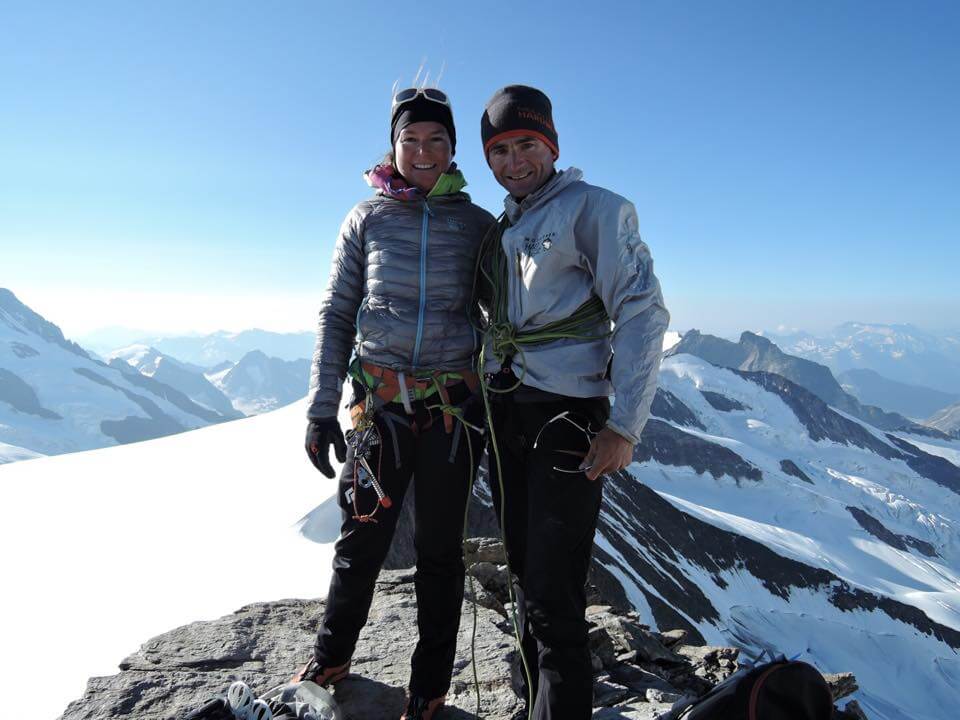
Steck had a magnetic personality and was warm and approachable, making him relatable to people who were not climbers. Unlike many alpinists who tend to focus on the technical aspects of their sport, Steck simplified his message to reach a wider audience. He relied on his personal charm to make connections and build relationships with sponsors. He was anything but machine-like – in fact, he disliked the nickname. His ability to connect with people on a personal level was one of his most remarkable qualities.
Steck was part of a new breed of climbers focused less on daring, bad boy persona and more on athletic prowess and training. Non-climbers could understand his references to athletics and his engagement of an Olympic coach. On the contrary, the masses had a harder time understanding the feats of climbers like wildman Jim Bridwell. The Yosemite legend’s torn hippie clothing and perennial Marlboro didn’t seem to suggest athleticism so much as attitude.
Ueli Steck’s resume of achievements in the mountains is legendary. In June 2004, he and Stephan Siegrist completed the impressive feat of climbing the Eiger, Mönch, and Jungfrau within 25 hours. Steck also gained recognition for the “Khumbu-Express Expedition” in 2005, during which he completed the first solo climb of the north wall of Cholatse (6,440 m) and the east wall of Taboche (6,505 m). Climb magazine named him one of the top three alpinists in Europe. It was merely the beginning of his career.
In 2013, he completed a remarkable solo ascent of a new route on the South Face of Annapurna – a feat that faced scrutiny within the climbing community. Steck had failed to keep a GPS track and claimed to have lost his camera. He completed the wildly difficult crux at night with a headlamp. However, two sherpas corroborated his story, claiming to have seen his headlight near the summit, above the worst difficulties. The commission representing the prize accepted his account and, as a result, he won the coveted Piolet d’Or again in 2014 (he also won in 2009).
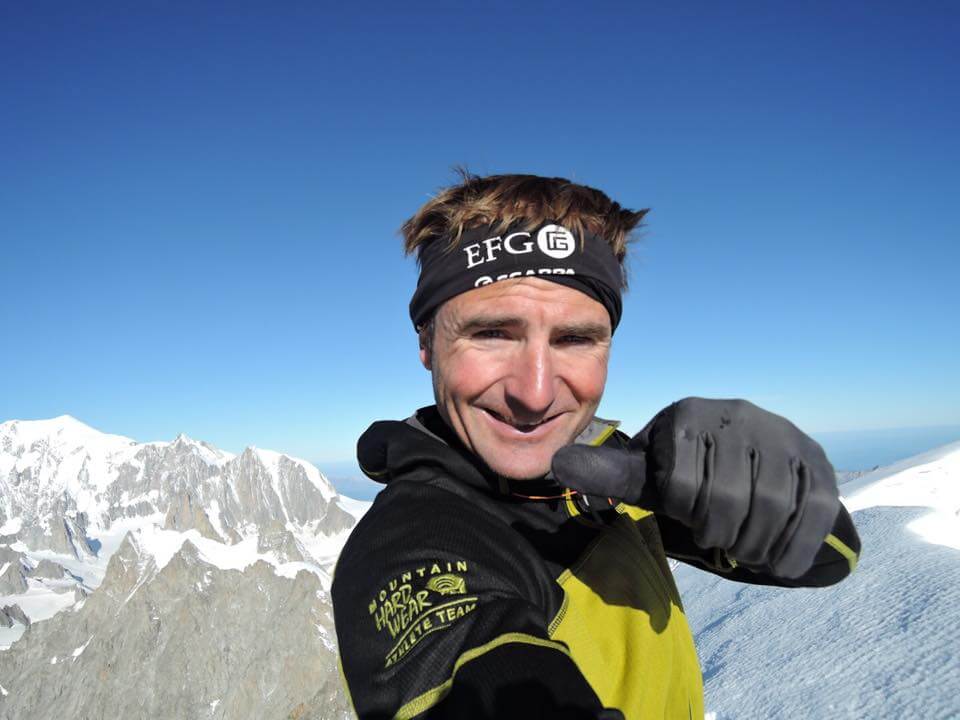
In 2015, over a period of 62 days, he climbed all 82 peaks in the Alps that were higher than 4000 meters. He used no motorized transportation, instead walking, bicycling, and paragliding between peaks. Although he missed the 60-day record, it was still a remarkable achievement. Notably, he suspended the tour after one of his climbing partners, Martijn Seuren, fell to his death on the Aiguille de Rochefort. Later that same year, in the ultimate demonstration of his fitness, Steck went on to reclaim the record for the North Face of the Eiger. He soloed it in just 2 hours, 22 minutes, and 50 seconds. He was approaching 40 years old at the time.
Naturally, Ueli Steck knew the precarious balance of a life spent in the mountains. During his first expedition to Annapurna in 2007, he suffered a blow to the head while climbing. The collision and ensuing 300m fall severely disoriented him. He had regained consciousness and was wandering around among crevasses when a team member spotted him.
The following year, while attempting the same objective, Steck found himself embroiled in a heroic rescue attempt to save the Spanish climber Iñaki Ochoa. Despite wading through chest-deep snow and climbing alone in borrowed boots, Steck was able to reach the stricken climber and administer a dose of steroids. Unfortunately, Ochoa, who had suffered a stroke high on the mountain, passed away the following day.
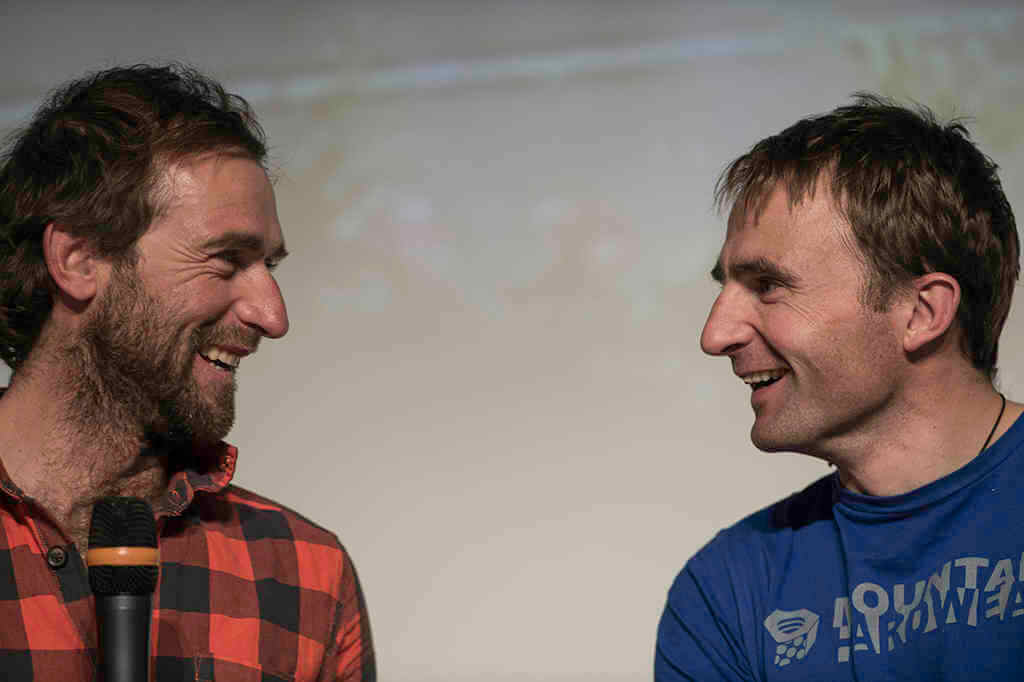
Ueli Steck passed away on April 30, 2017. He was acclimatizing for an ascent of the Hornbein route on the West Ridge of Everest without supplemental oxygen. The Hornbein had been climbed only a few times, with the most recent successful ascent in 1991. Steck had planned to climb the Hornbein Couloir to reach the summit of Everest. He would then traverse to the peak of Lhotse, the fourth-highest mountain in the world. No one had ever accomplished this combination of ascents before.
During the preparations for his attempt, Steck’s climbing partner, Tenji Sherpa, suffered frostbite and would require several weeks to heal. Despite this setback, Steck continued with his acclimatization and scouting. He ascended to Camp 2 on Everest and made his way toward the South Col. On April 29, he altered his plans, informing Tenji via text that he would be climbing the nearby peak of Nuptse instead.
On April 30, at approximately 4:30 AM, Ueli Steck began his climb. He was accompanied by French climber Yannick Graziani, who was also attempting to ascend Everest. Graziani proceeded towards Camp 3 while Steck branched off to the right to climb Nuptse. Sherpas and various expedition members spotted him around dawn, partway up the face.
Steck fell an estimated 1,000 meters from approximately 300 meters (980 ft) below the summit. His body was discovered in the Western Cwm, between camps 1 and 2.
While many folks wondered “How did Ueli Steck fall,” there is some mystery surrounding the death. Ultimately, the exact cause of the fall is unknown, although rescuers found a bloodstained rock the size of a football near his body. Many climbers were surprised that he would attempt such a serious route solo, despite his reputation for such feats. In this terrain without a rope, there are many risk factors completely out of a climber’s control.

